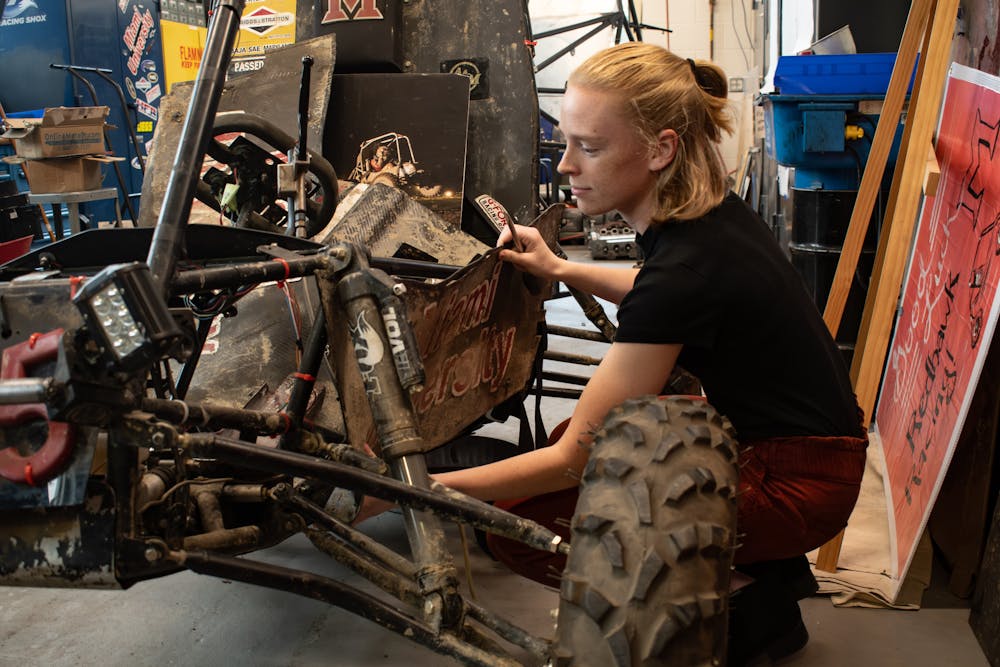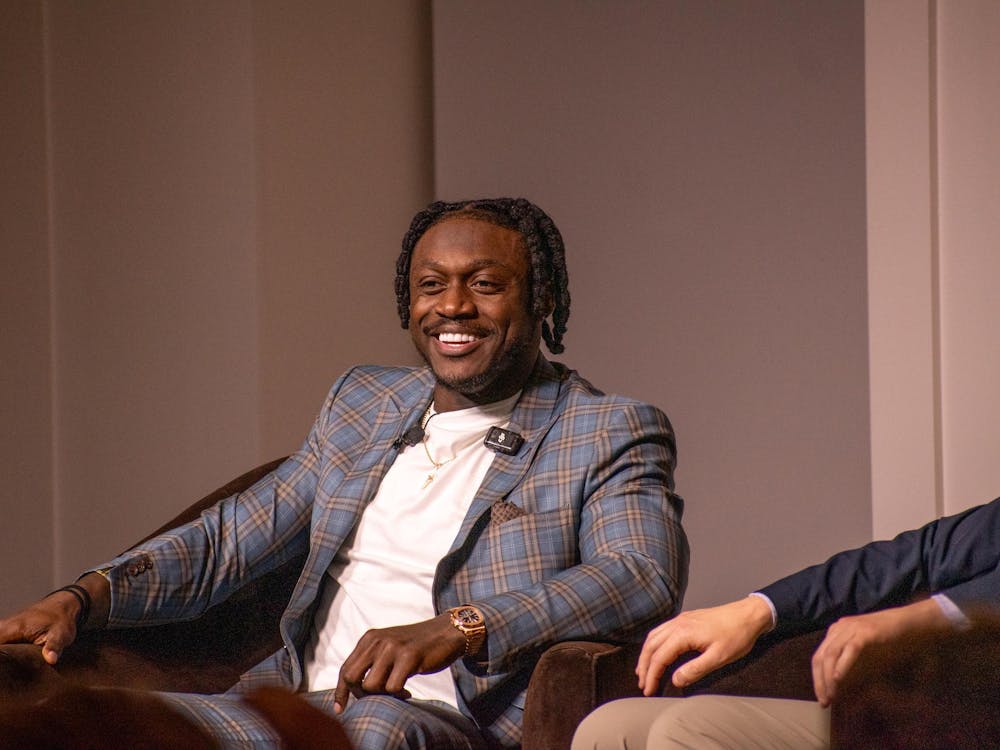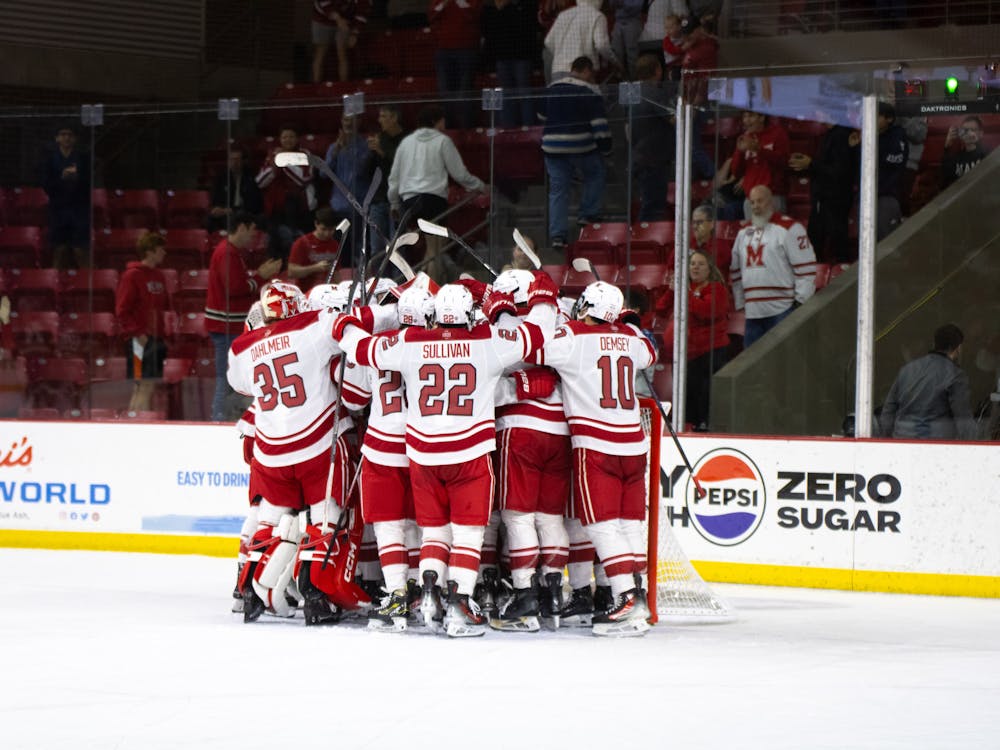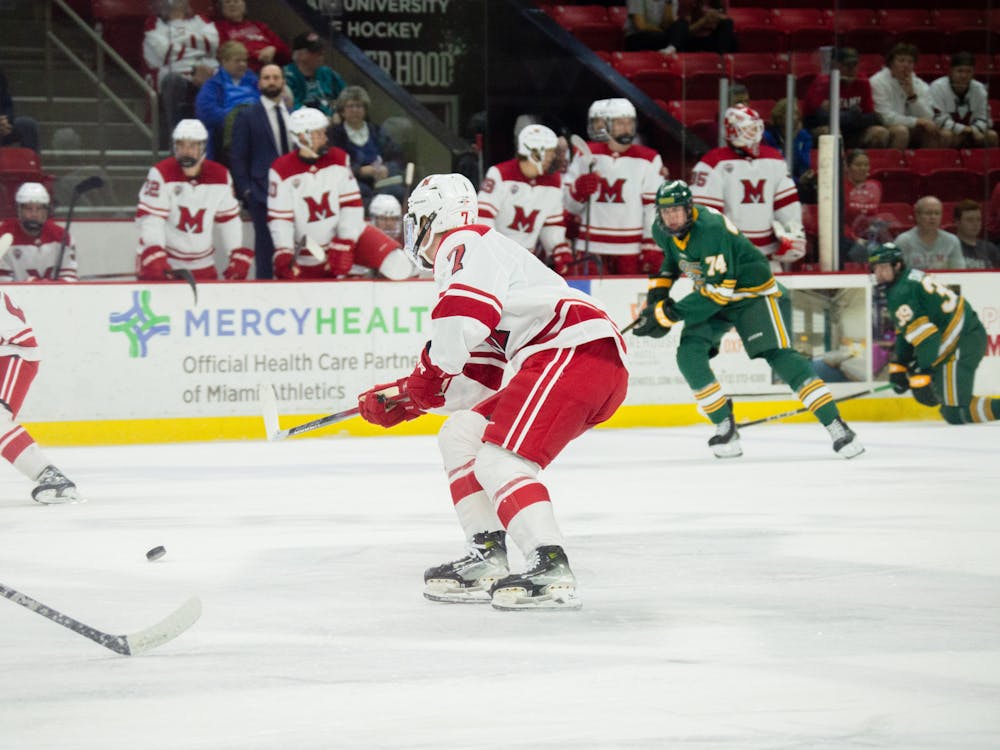Start your engines, RedHawks.
Miami University’s car racing and building team, RedHawk Racing, raises money, builds cars and eventually races them at organized competitions across the country.
This relatively unknown Miami team consists of multiple parts, including a formula car team (think Formula One car), a baja car team (off-road) and a business team. They’re all aimed toward building cars for competition.
Each competition includes static and dynamic events.
“So for the static events, it's pretty much analyzing how well did you build a car? How cost efficient were you with your budget?” said Ian Pascoe, co-captain of RedHawk Racing.
Teams also have to have documentation of how they built the car.
“Something that a lot of people don't think about when they first start being an engineer is that you build something and then you have to write how you built it,” Pascoe said “That's pretty much so that when you get audited, you have proof that you built it well.”
While the static events are similar between the formula division and the baja division, the dynamic events vary.
The baja cars face a grueling four-hour endurance race to test their capabilities.
“That event alone pretty much governs the entire design of that car, because they need to be built as rugged and tough as possible,” Pascoe said. “If your car ran the entire time during the endurance event, you're going to win or place really, really well.”
The RedHawks were 10 laps ahead in last year’s race before their car broke down, causing them to place second instead.
William Butler, another captain of RedHawk Racing oversees the design team and has driven the baja car the last two years.
Enjoy what you're reading?
Signup for our newsletter
“It's definitely challenging,” Butler said. “It's small, it's cramped, not terribly comfortable. So you do have to put a lot of just kind of like pain in the back of your head and just kind of keep trucking on, while remaining fully aware of where your car is and where everyone else is, because it's entirely novice drivers for the most part.”
Baja cars face a particularly unique obstacle because of their choice of transmission.
“What makes these cars particularly challenging over perhaps the other cars, is we run manual transmissions, which off road is a bit of a nightmare to drive,” Butler said. “But it's what makes us faster and so much more efficient than the majority of the other teams that we raced.”
On the other side of the track sits the formula team which focuses on speed.
“Dynamic events are time trials, because these cars are really, really fast, and they're also kind of dangerous,” Poscoe said. “The current world record for fastest car in our division is 0.8 seconds 0 to 60.”
For reference, the 2023 Chevy Corvette accelerates from 0 to 60 in 2.9 seconds.
The competition, known as Formula SAE or FSAE, functions as Formula One for students.
“FSAE is a global competition,” Poscoe said. “Some of the competitions we enter are like 50 to 80 teams.”
Racing costs money, even at the collegiate level. To secure funds for the cars, the business team comes into play.
“We reach out to a bunch of different companies and individuals over the course of the year and that's where we get all of our funding from,” said Isaac Arredondo, the president of the RedHawk Racing business team.
Companies like Pepsi and American Axle have sponsored RedHawk Racing in the past.
RedHawk Racing hopes to host a race sometime this year in the Oxford area against rival University of Cincinnati.




